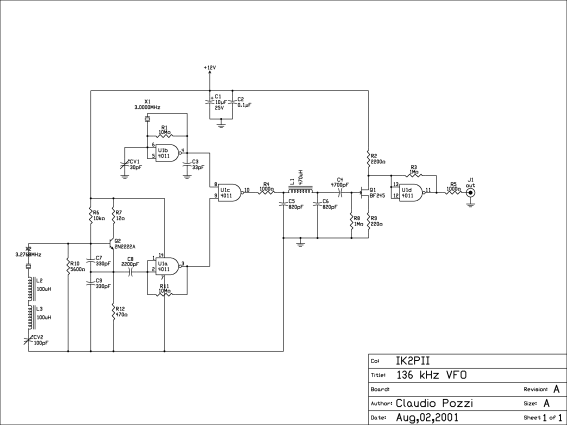 | ||
People also search for 15-meter band, 4-meter band | ||
New 2200 meter band we hope
The 2200 meter or 136 kHz band is the lowest frequency band in which amateur radio operators are allowed to transmit. It was formally allocated to amateurs at the 2007 World Radiocommunication Conference (WRC-07). The band is available on a secondary basis in all ITU regions with the limitation that amateur stations have maximum radiated power of 1 Watt effective isotropic radiated power.
Contents
- New 2200 meter band we hope
- Zl1cvd tenatesta 137khz 2200 meter band sweep
- History
- International frequency allocation
- Technical issues
- Band plan
- United States
- Countries with a known band allocation
- Countries with past or current experimental operation
- References
The 2200 meter band is in the low frequency (LF) region, just below the 153–279 kHz longwave broadcasting band.
Zl1cvd tenatesta 137khz 2200 meter band sweep
History
The International Telecommunication Union's 2007 World Radiocommunication Conference (WRC-07) in Geneva agreed a secondary allocation of 135.7–137.8 kHz to the Amateur Service on Friday, 9 November 2007. Prior to the ITU formal allocation some countries did have access or predecessors. For example, in the UK, operation on the even lower frequency of 73 kHz had been allowed from 1996 until 2003. A small number of countries also have limited license-exempt use (LowFER).
International frequency allocation
A number of European countries have already allocated the 135.7–137.8 kHz band to amateur radio use based on CEPT/ERC Recommendation 62-01 E ("Use of the band 135.7-137.8 kHz by the Amateur Service", Mainz 1997). The allocation is on a secondary basis with a maximum ERP power of 1 W. Otherwise the band 130–148.5 is allocated on a primary base to the Maritime Mobile Service and the Fixed Service. The main users are naval one-way transmissions and radiolocation systems.
Technical issues
Such low frequency transmissions require specialized equipment – usually custom made. In countries where it is allowed, maximum radiated power is usually limited to 1 Watt (0 dBW or 30 dBm), but even this can be extremely difficult to achieve from practical equipment and antennas. Reception also poses problems due to considerable natural and man-made noise and interference (QRN and QRM).
Many users and experimenters have settled on extremely slow, computer-generated and displayed Morse code as the most common transmission mode. This mode is known as QRSS, where the doubling of the ‘S’ emphasises the extreme slowness. (The international Q code QRS means “Please send more slowly”, or “slow Morse” in radio jargon.)
Band plan
The 2005 IARU Region 1 Conference defined the band as follows:
United States
There is no active 136 kHz amateur allocation in the United States.
In 1998, the FCC rejected an ARRL petition for LF allocations at 135.7–137.8 kHz and 160–190 kHz. In 2002, indications from the FCC had been that 136 kHz privileges would be authorized soon. On 14 May 2003, however, the FCC declined to grant these privileges citing concerns over potential interference with power line communications (PLC) systems operating unlicensed under Part 15 which are used by electrical utilities to send control through the power grid. But the FCC added that amateurs wishing to experiment with 136 kHz communications may apply for a Part 5 Experimental License or operate under Part 15 regulations for this part of the electromagnetic spectrum. In the case of Part 15, the field strength measured 300 meters from the antenna may not exceed 2,400 microVolts per meter divided by the frequency in kilohertz, or approximately 17 μV/m.
On 19 November 2012, the FCC issued a Notice of Proposed Rulemaking demonstrating intent to authorize the amateur service as a secondary user of the LF band between 135.7 and 137.8 kHz with a maximum EIRP of 1 Watt. The notice seeks to reexamine the 2003 rejection citing the international allocation of the band in all ITU regions by WRC-07 and the lack of use by the primary allocation holders. The notice seeks further comment and empirical evidence regarding interference to PLC systems based on data collected by experimental licenses granted in the United States and by other stations around the world.
On 27 April 2015 the Federal Communications Commission announced a preliminary decision to permit amateur operation on a secondary basis from 135.7–137.8 kHz, at a maximum output of 1 Watt EIRP.
